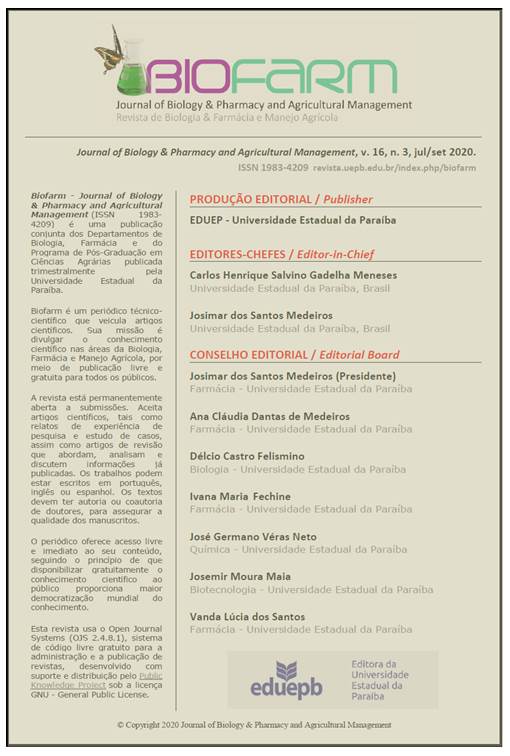INSETOS-PRAGAS EM MUDAS DE Hylocereus spp. (Cactaceae) NA PARAÍBA
Resumo
Plantios de Hylocereus (Cactaceae) tem sido cada vez mais encontrados no semiárido brasileiro, pois apresentam adaptabilidade ecológica da região e alto valor comercial. Pragas nesta cultura agrícola em áreas do estado da Paraíba têm sido visualizadas e este trabalho tem como objetivo a sua identificação. Para tal foram coletadas plantas com tais injúrias e seus causadores em um viveiro de mudas, situado no Instituto Nacional do Semiárido (Campina Grande-PB). Para a classificação destes insetos foram utilizados material bibliográfico e microscopia. Foi constatada a primeira ocorrência de Schistocerca pallens (Thunberg) (Orthoptera: Acrididae) e Diaspis echinocacti (Bouché, 1833) (Hemiptera: Diaspididae) causando tais injúrias em plantas de Hylocereus spp. no estado da Paraíba (Brasil). A partir desta evidência, trabalhos para melhorar as condições de manejo desta praga desta cultura podem ser realizados levando em consideração as informações descritas neste manuscrito.
Downloads
Publicado
Como Citar
Edição
Seção
Licença
Copyright (c) 2023 BIOFARM - Journal of Biology & Pharmacy and Agricultural Management

Este trabalho está licenciado sob uma licença Creative Commons Attribution 4.0 International License.
Authors and co-authors retain copyright, but cede the right to first publication to the Journal of Biology & Pharmacy and Agricultural Management (BIOFARM).
Copyright encompasses exclusive rights to reproduce and deliver the article in all form and media, including reprints, photographs, microfilms and any other similar reproductions, as well as translations. The reproduction of any part of this journal, its storage in databases and its transmission by any form or media - such as electronic, electrostatic and mechanical copies, photocopies, recordings, magnetic media, etc. - will be allowed only with a written permission from the BIOFARM.
Articles published in BIOFARM will be Open-Access articles distributed under the terms and conditions of the Creative Commons Attribution License (CC BY). The copyright is retained by the author(s). BIOFARM will insert the following note at the end of the published text:
© 2023 by the authors; licensee BIOFARM, Campina Grande, Brazil. This article is an open access article distributed under the terms and conditions of the Creative Commons Attribution License (http://creativecommons.org/licenses/by/4.0/).


